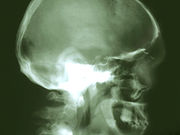Increased risk of multiple squamous cell carcinomas in esophagus and head and neck
WEDNESDAY, Nov. 9, 2016 (HealthDay News) — Patients with multiple areas of dysplastic squamous epithelium have increased risk for metachronous squamous cell carcinomas in the upper aerodigestive tract, according to a study published in the November issue of Gastroenterology.
Chikatoshi Katada, M.D., Ph.D., from Kitasato University School of Medicine in Sagamihara, Japan, and colleagues examined data from 331 patients with early-stage esophageal SCC to assess the dysplastic squamous epithelium in the esophagus. Patients were classified according to the number of Lugol-voiding lesions: no lesion, one to nine lesions, and 10 or more lesions (A, B, and C, respectively).
The researchers found that over the two-year study period, metachronous SCCs of the esophagus were detected in 4, 9.4, and 24.7 percent of patients in groups A, B, and C, respectively (P < 0.0001 for A versus B or B versus C). Head and neck SCCs were detected in none, 1.7, and 8.6 percent of patients in groups A, B, and C, respectively (P = 0.016 for A versus C; P = 0.008 for B versus C). SCC of the esophagus or head and neck developed in 4.0, 10.0, and 31.4 percent of patients in groups A, B, and C, respectively (P < 0.0001 for A versus B or A versus C). The risk of multiple SCCs of the esophagus was decreased with alcohol abstinence (adjusted hazard ratio, 0.47).
“Multiple dysplastic lesions in the esophagus increase the risk of multiple SCCs,” the authors write.
Full Text
Copyright © 2016 HealthDay. All rights reserved.








